11464 AN EXTRAORDINARY WALNUT AND EXOTIC WOODS INLAID PARCEL GILT COMMODE OF PROFOUNDLY SHAPED REVERSE BOMBÉ FORM BEARING THE ARMS OF VIALÈTES D’AIGNAN “MANUFACTURE ROYALE” OF MONTAUBAN French, Montauban or Bordeaux. Mid-Eighteenth Century. Measurements: Height: 33″ (84 cm); Width: 51″ (130 cm); Depth: 25″ (61 cm).
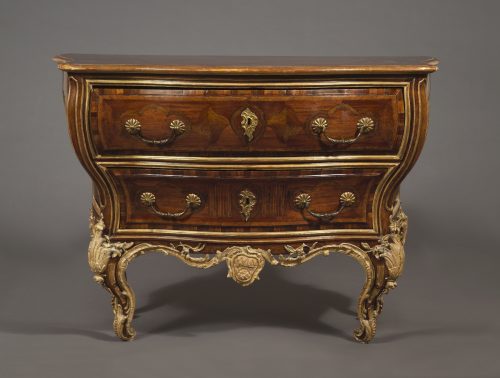
Research:
Of walnut with exotic woods inlay. The old but later shaped walnut top with gilded ‘D’ molded edge rests upon a reverse bombé corpus with two geometric inlaid drawers each with paired gilt brass drop handles and gilt-brass escutcheons. The sides and front corners with shaped sunken panels. The whole resting on a carved and gilded apron centered to the front with an angled heraldic device within a rococo cartouche. The four gilded legs of cabriole shape with incurved toes. A later possibly 19th century coat of blue green paint was carefully removed using dry strip method.
The Vialètes d’Aignan family, famed merchants in the textile industry of Montauban, France, is known to have been the original owner of the commode, as its carved and gilded apron is centered by a rococo cartouche containing their highly distinctive coat of arms of arms, in which the field contains a mountain flanked by two violet flowers.
They were the wealthiest and most well-known family of textile merchants in the commune of Montauban in southern France, just north of Toulous, known for their production of cadis, a high-quality wool serge, or fabric, known as a worsted, in which fibers are cleaned and smoothed before spinning and weaving. The fineness of the wool and high thread count produced “a sleek, light, and breathable textile…that is durable, warm and water resistant.” The Vialètes “went to great lengths to perfect the finished product that made them and Montauban famous.”
The present commode is a tour de force of the cabinet making art at the height of the Rococo period in France, clearly related to the finest examples of cabinet furniture made in the prosperous and sophisticated port city of Bordeaux, which became the first French colonial port for trade with Saint-Domingo and Cuba in 1736. However, the particularly impressive understanding of the Rococo idiom and mastery of execution is of a more progressive and ambitious level than is found on even the finest related Bordeaux examples.
Full research report available on request.
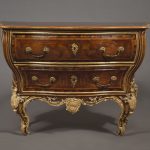
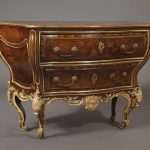
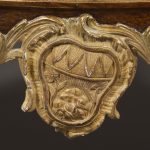

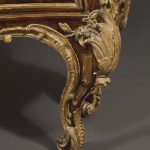
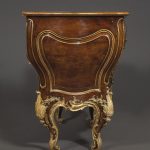
Comments are closed.